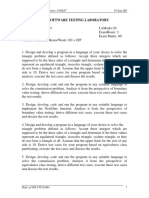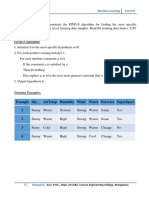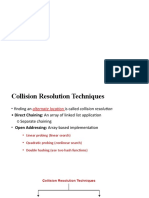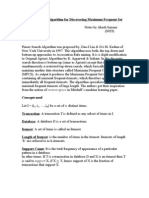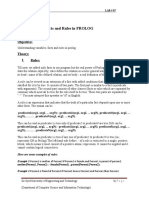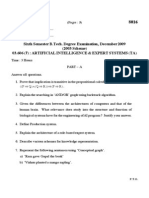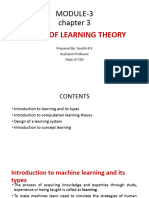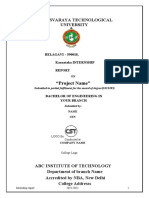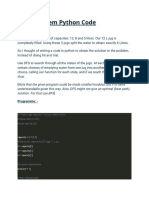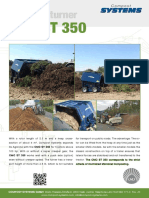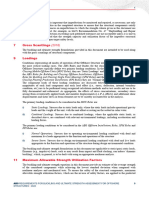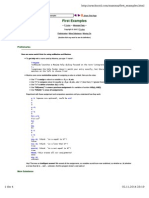0% found this document useful (1 vote)
610 views3 pagesCANDIDATE-ELIMINATION Learning Algorithm
The Candidate-Elimination algorithm computes the version space containing all hypotheses consistent with training examples. It initializes the version space with maximally general and specific hypotheses. For each example, inconsistent hypotheses are removed from the version space and new generalizations/specializations are added if they are consistent and more general/specific than other hypotheses. The algorithm outputs the most specific and most general consistent hypotheses.
Uploaded by
Indira RajCopyright
© © All Rights Reserved
We take content rights seriously. If you suspect this is your content, claim it here.
Available Formats
Download as PDF, TXT or read online on Scribd
0% found this document useful (1 vote)
610 views3 pagesCANDIDATE-ELIMINATION Learning Algorithm
The Candidate-Elimination algorithm computes the version space containing all hypotheses consistent with training examples. It initializes the version space with maximally general and specific hypotheses. For each example, inconsistent hypotheses are removed from the version space and new generalizations/specializations are added if they are consistent and more general/specific than other hypotheses. The algorithm outputs the most specific and most general consistent hypotheses.
Uploaded by
Indira RajCopyright
© © All Rights Reserved
We take content rights seriously. If you suspect this is your content, claim it here.
Available Formats
Download as PDF, TXT or read online on Scribd
/ 3





